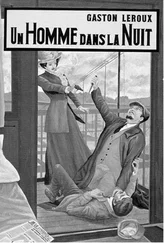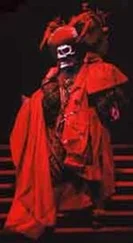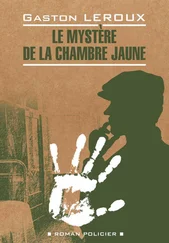“Let them talk, little one!” he repeated, jingling his golden spurs. “No doubt your toilet is a little extravagant and wild, but what difference does that make with such a charming damsel as yourself?”
“Good gracious!” exclaimed the blonde Gaillefontaine, drawing up her swan-like throat, with a bitter smile. “I see that messieurs the archers of the king’s police easily take fire at the handsome eyes of gypsies!”
“Why not?” said Phoebus.
At this reply uttered carelessly by the captain, like a stray stone, whose fall one does not even watch, Colombe began to laugh, as well as Diane, Amelotte, and Fleur-de-Lys, into whose eyes at the same time a tear started.
The gypsy, who had dropped her eyes on the floor at the words of Colombe de Gaillefontaine, raised them beaming with joy and pride and fixed them once more on Phoebus. She was very beautiful at that moment.
The old dame, who was watching this scene, felt offended, without understanding why.
“Holy Virgin!” she suddenly exclaimed, “what is it moving about my legs? Ah! the villanous beast!”
It was the goat, who had just arrived, in search of his mistress, and who, in dashing towards the latter, had begun by entangling his horns in the pile of stuffs which the noble dame’s garments heaped up on her feet when she was seated.
This created a diversion. The gypsy disentangled his horns without uttering a word.
“Oh! here’s the little goat with golden hoofs!” exclaimed Bérangère, dancing with joy.
The gypsy crouched down on her knees and leaned her cheek against the fondling head of the goat. One would have said that she was asking pardon for having quitted it thus.
Meanwhile, Diane had bent down to Colombe’s ear.
“Ah! good heavens! why did not I think of that sooner? ‘Tis the gypsy with the goat. They say she is a sorceress, and that her goat executes very miraculous tricks.”
“Well!” said Colombe, “the goat must now amuse us in its turn, and perform a miracle for us.”
Diane and Colombe eagerly addressed the gypsy.
“Little one, make your goat perform a miracle.”
“I do not know what you mean,” replied the dancer.
“A miracle, a piece of magic, a bit of sorcery, in short.”
“I do not understand.” And she fell to caressing the pretty animal, repeating, “Djali! Djali!”
At that moment Fleur-de-Lys noticed a little bag of embroidered leather suspended from the neck of the goat,—“What is that?” she asked of the gypsy.
The gypsy raised her large eyes upon her and replied gravely,—“That is my secret.”
“I should really like to know what your secret is,” thought Fleur-de-Lys.
Meanwhile, the good dame had risen angrily,—“Come now, gypsy, if neither you nor your goat can dance for us, what are you doing here?”
The gypsy walked slowly towards the door, without making any reply. But the nearer she approached it, the more her pace slackened. An irresistible magnet seemed to hold her. Suddenly she turned her eyes, wet with tears, towards Phoebus, and halted.
“True God!” exclaimed the captain, “that’s not the way to depart. Come back and dance something for us. By the way, my sweet love, what is your name?”
“La Esmeralda,” said the dancer, never taking her eyes from him.
At this strange name, a burst of wild laughter broke from the young girls.
“Here’s a terrible name for a young lady,” said Diane.
“You see well enough,” retorted Amelotte, “that she is an enchantress.”
“My dear,” exclaimed Dame Aloise solemnly, “your parents did not commit the sin of giving you that name at the baptismal font.”
In the meantime, several minutes previously, Bérangère had coaxed the goat into a corner of the room with a marchpane cake, without any one having noticed her. In an instant they had become good friends. The curious child had detached the bag from the goat’s neck, had opened it, and had emptied out its contents on the rush matting; it was an alphabet, each letter of which was separately inscribed on a tiny block of boxwood. Hardly had these playthings been spread out on the matting, when the child, with surprise, beheld the goat (one of whose “miracles” this was no doubt), draw out certain letters with its golden hoof, and arrange them, with gentle pushes, in a certain order. In a moment they constituted a word, which the goat seemed to have been trained to write, so little hesitation did it show in forming it, and Bérangère suddenly exclaimed, clasping her hands in admiration,—
“Godmother Fleur-de-Lys, see what the goat has just done!”
Fleur-de-Lys ran up and trembled. The letters arranged upon the floor formed this word,—
PHOEBUS.
“Was it the goat who wrote that?” she inquired in a changed voice.
“Yes, godmother,” replied Bérangêre.
It was impossible to doubt it; the child did not know how to write.
“This is the secret!” thought Fleur-de-Lys.
Meanwhile, at the child’s exclamation, all had hastened up, the mother, the young girls, the gypsy, and the officer.
The gypsy beheld the piece of folly which the goat had committed. She turned red, then pale, and began to tremble like a culprit before the captain, who gazed at her with a smile of satisfaction and amazement.
“Phoebus!” whispered the young girls, stupefied: “‘tis the captain’s name!”
“You have a marvellous memory!” said Fleur-de-Lys, to the petrified gypsy. Then, bursting into sobs: “Oh!” she stammered mournfully, hiding her face in both her beautiful hands, “she is a magician!” And she heard another and a still more bitter voice at the bottom of her heart, saying,—“She is a rival!”
She fell fainting.
“My daughter! my daughter!” cried the terrified mother. “Begone, you gypsy of hell!”
In a twinkling, La Esmeralda gathered up the unlucky letters, made a sign to Djali, and went out through one door, while Fleur-de-Lys was being carried out through the other.
Captain Phoebus, on being left alone, hesitated for a moment between the two doors, then he followed the gypsy.
CHAPTER II. A PRIEST AND A PHILOSOPHER ARE TWO DIFFERENT THINGS.
––––––––

THE PRIEST WHOM THE young girls had observed at the top of the North tower, leaning over the Place and so attentive to the dance of the gypsy, was, in fact, Archdeacon Claude Frollo.
Our readers have not forgotten the mysterious cell which the archdeacon had reserved for himself in that tower. (I do not know, by the way be it said, whether it be not the same, the interior of which can be seen to-day through a little square window, opening to the east at the height of a man above the platform from which the towers spring; a bare and dilapidated den, whose badly plastered walls are ornamented here and there, at the present day, with some wretched yellow engravings representing the façades of cathedrals. I presume that this hole is jointly inhabited by bats and spiders, and that, consequently, it wages a double war of extermination on the flies).
Every day, an hour before sunset, the archdeacon ascended the staircase to the tower, and shut himself up in this cell, where he sometimes passed whole nights. That day, at the moment when, standing before the low door of his retreat, he was fitting into the lock the complicated little key which he always carried about him in the purse suspended to his side, a sound of tambourine and castanets had reached his ear. These sounds came from the Place du Parvis. The cell, as we have already said, had only one window opening upon the rear of the church. Claude Frollo had hastily withdrawn the key, and an instant later, he was on the top of the tower, in the gloomy and pensive attitude in which the maidens had seen him.
Читать дальше










